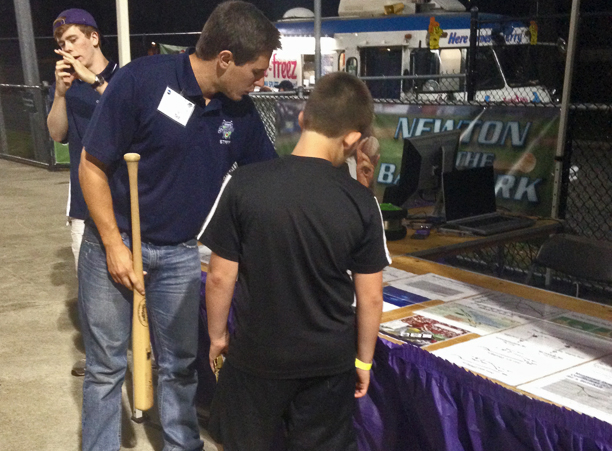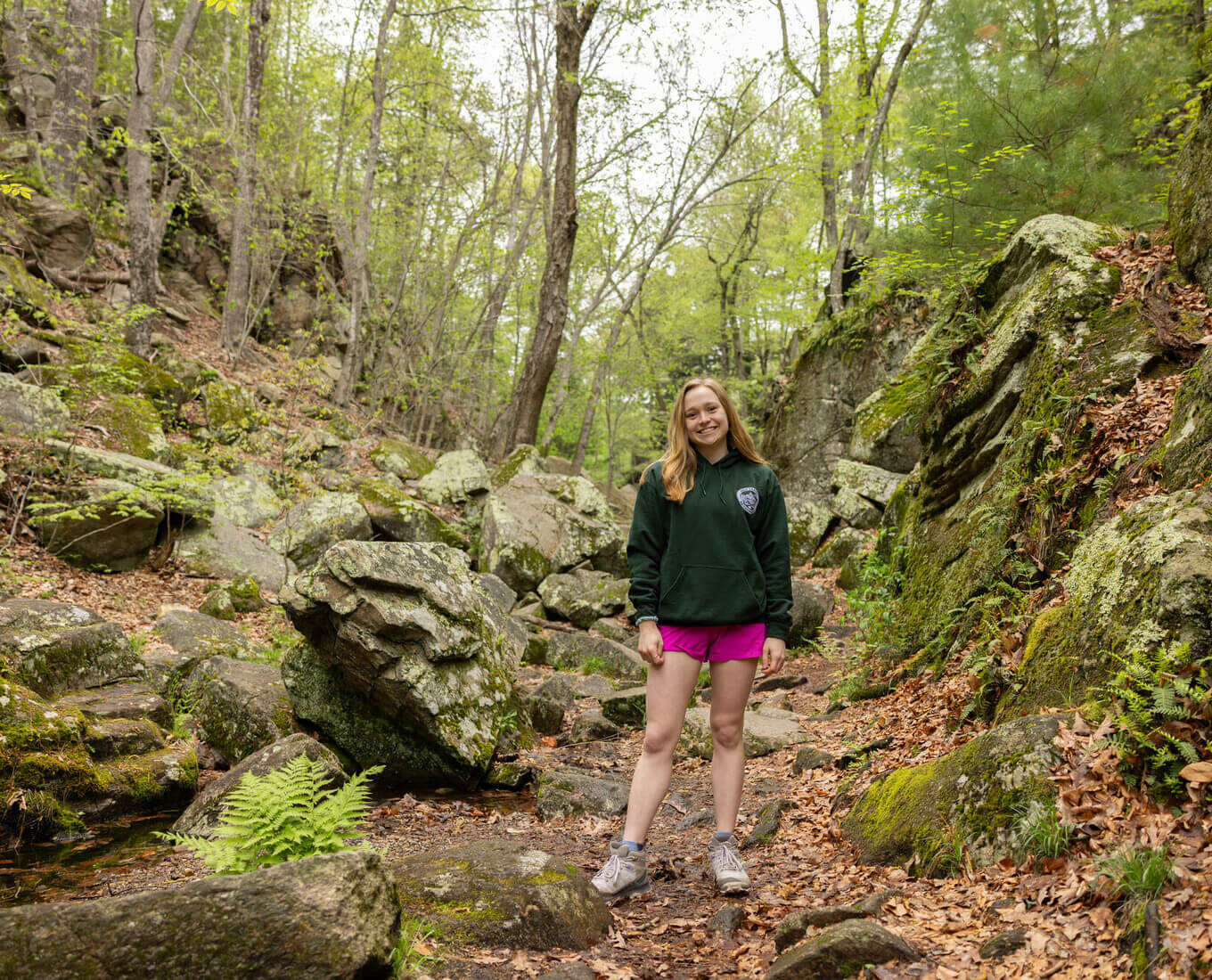 Three College of the Holy Cross students took their summer research out of the classroom and into the ballpark to support the return of baseball to Worcester with the Worcester Bravehearts. The students spent their summers studying the physics of baseball under the guidance of Matthew Koss, professor of physics at the College. The research, funded by Holy Cross and the Massachusetts Space Grant Consortium, gave Kyle Hughes ’17, Robert Daly ’16, and Theodore Langlois ’17 the opportunity to work in the physics of baseball lab, along with UMass Amherst student, Radha Dutta ’17, who volunteered her time to the project.
Three College of the Holy Cross students took their summer research out of the classroom and into the ballpark to support the return of baseball to Worcester with the Worcester Bravehearts. The students spent their summers studying the physics of baseball under the guidance of Matthew Koss, professor of physics at the College. The research, funded by Holy Cross and the Massachusetts Space Grant Consortium, gave Kyle Hughes ’17, Robert Daly ’16, and Theodore Langlois ’17 the opportunity to work in the physics of baseball lab, along with UMass Amherst student, Radha Dutta ’17, who volunteered her time to the project.
Instead of keeping their research to themselves, the students brought their knowledge down to Fitton Field to share with those attending the Bravehearts’ baseball games. The student-run booth, called “Newton at the Ballpark,” was designed to increase science literacy by making science accessible to a public audience. The booth featured diagrams explaining the physics of bat-ball collision, the rotation of different pitches, and even showed field comparisons between Fenway Park and Fitton Field.
Along with their diagram-filled posters, the student researchers also offered hands-on demonstrations that their “customers” could directly participate in. Their most popular demonstration explained what is arguably the most exciting moment in baseball: when the ball is hit out of the park. The demonstration let the participants experience the difference in the vibrations felt through the bat when hit anywhere on the bat versus the bat’s “sweet spot.”
“The ‘sweet spot’ is actually where most of the energy from the collision goes back into the baseball. That fact sparked the interest of a lot of different people,” explained Hughes.
“Having the ability to teach a subject really demonstrates a mastery of it,” says Langlois. “So if we were expected to teach and explain baseball physics, we had better be the resident experts. It was difficult at first to learn which keywords would get our meaning across to kids as well as adults.”
Koss explains that the benefits of the project were multifaceted: “For the students researchers, they learn some physics, laboratory skills and attitudes, communication skills and practices, and a professionalization of how they go about their work. They also gain the satisfaction of sharing their knowledge with the public.”
The booth was intended to augment both the students’ research and the experience of those attending the baseball games. “The Physics booth adds a great learning experience to our baseball games,” says Dave Peterson, general manager of the Worcester Bravehearts. “As you know, kids don't usually like to sit still and watch a full baseball game, so the physics booth offered kids the opportunity to experience something different at the ballpark while providing a top-notch educational activity. We always strive to bring more to the game experience than just the play on the field, so the physics booth certainly helped to accomplish that.”
Especially popular with families, the booth was most often visited by kids interested in science or who played baseball themselves. One young “customer” in particular was “so interested in the booth that he hung out with us for the majority of the game. He got to the level of understanding that he began trying to teach people himself!” says Hughes. The student researchers note that getting kids interested in physics was the most rewarding part.
Langlois adds, “I think there's a scientist in everyone.”
Related Information


